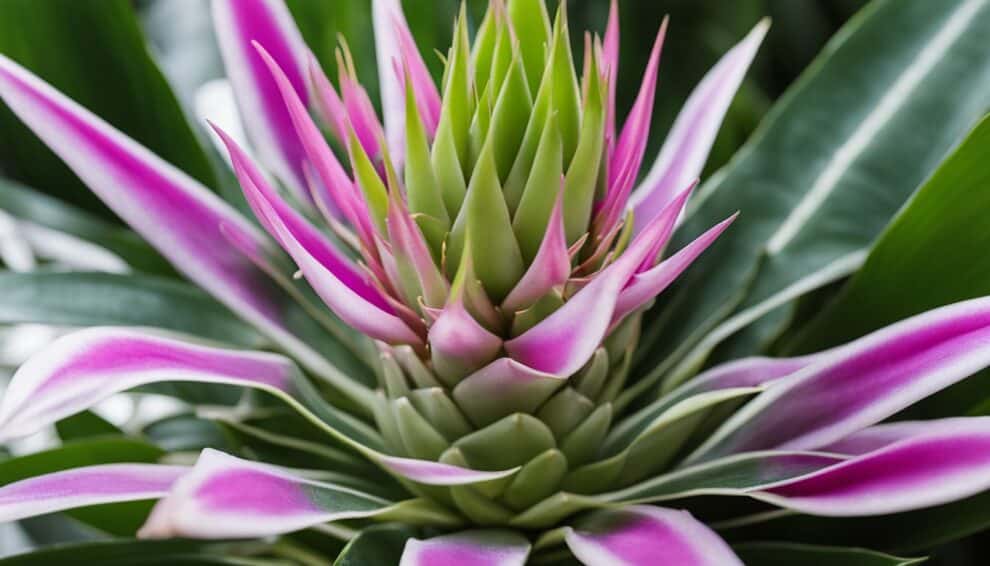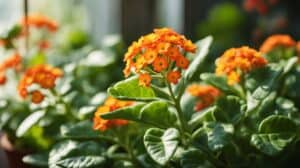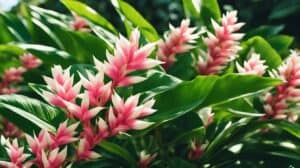The Silver Vase Plant, scientifically known as Aechmea fasciata, is a stunning tropical plant that is native to Brazil.
This plant is a popular choice among beginner gardeners due to its low maintenance requirements and its ability to thrive in a variety of conditions.
The plant’s striking appearance and easy care make it a great addition to any home or office.
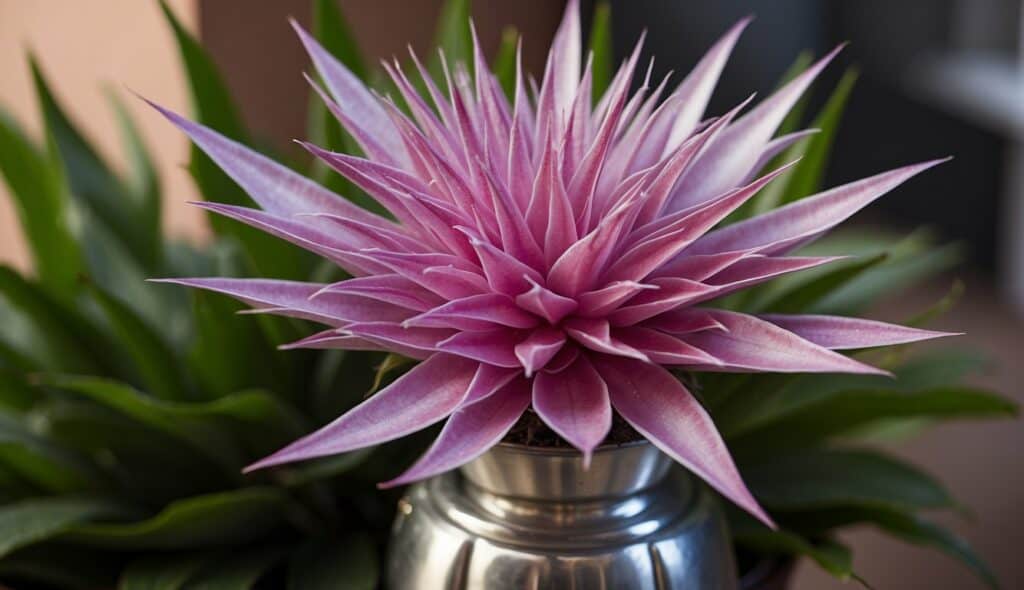
The Silver Vase Plant is characterized by its long, narrow leaves that grow in a rosette pattern.
The leaves are a beautiful shade of green and have a silver-colored band running down the center.
The plant produces a tall, pink inflorescence that is made up of small flowers.
The inflorescence can last for several weeks and adds a pop of color to any room.
For those who are new to gardening, the Silver Vase Plant is an ideal choice.
This plant is easy to care for and can thrive in a variety of light and temperature conditions.
With a little bit of attention and care, the Silver Vase Plant can bring beauty and life to any space.
Understanding Aechmea Fasciata
Botanical Profile
Aechmea fasciata, also known as the Silver Vase Plant, is a species of bromeliad native to Brazil.
It is a member of the Bromeliaceae family, which includes over 3,000 species of flowering plants.
The Silver Vase Plant is a perennial herb that typically grows up to 60 cm in height and 60 cm in width.
It has long, narrow leaves that are silver-green in color and form a rosette shape.
The plant produces a single inflorescence, which is a tall, upright spike that can reach up to 1 meter in height.
The inflorescence is made up of numerous small flowers that are blue and pink in color.
Common Names
The Silver Vase Plant is known by several common names, including Urn Plant, Silver Vase Bromeliad, and Aechmea.
The name “Silver Vase” refers to the shape of the plant’s rosette, which resembles a vase or urn.
Origin and Habitat
Aechmea fasciata is native to the Atlantic rainforest region of Brazil, where it grows as an epiphyte on trees or on rocky outcrops.
The plant is adapted to growing in low light conditions and can tolerate a wide range of temperatures, from 10°C to 35°C.
It is commonly grown as an ornamental plant in gardens and as a houseplant.
In summary, the Silver Vase Plant is a beautiful and easy-to-care-for plant that can add a touch of elegance to any garden or indoor space.
With its unique shape and striking inflorescence, it is sure to be a conversation starter.
Caring for Your Silver Vase Plant
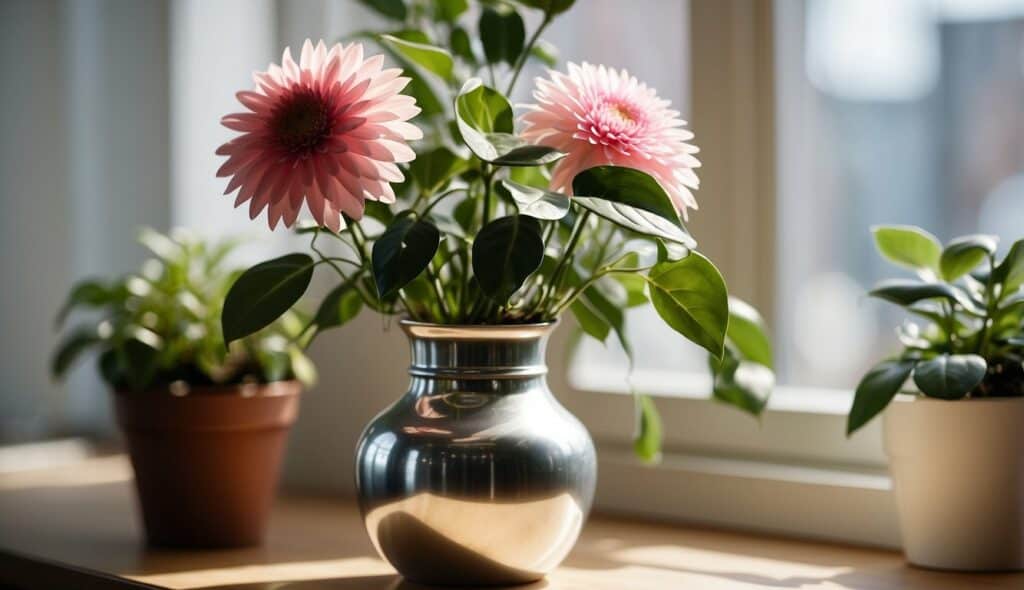
Lighting Requirements
The Silver Vase Plant requires bright, indirect light to thrive. It can tolerate some direct sunlight, but too much can damage the leaves.
If the plant isn’t getting enough light, the leaves will become dark green and lose their silver color.
On the other hand, if the plant is getting too much light, the leaves will turn yellow and brown.
It’s best to place the plant near a window that faces east or west.
Watering Techniques
The Silver Vase Plant prefers to be kept consistently moist, but not waterlogged.
It’s important to water the plant thoroughly, allowing the water to drain out of the bottom of the pot.
It’s also important to avoid getting water in the center of the plant, as this can cause rot.
The frequency of watering will depend on the temperature and humidity of the environment, but generally, the plant should be watered every one to two weeks.
Soil and Potting
The Silver Vase Plant prefers well-draining soil that is rich in organic matter. A good potting mix should consist of peat moss, perlite, and vermiculite.
The plant should be potted in a container that has drainage holes to prevent water from accumulating in the bottom.
It’s also important to use a pot that is slightly larger than the root ball to allow for growth.
Temperature and Humidity Control
The Silver Vase Plant prefers temperatures between 60 and 75 degrees Fahrenheit.
It can tolerate temperatures as low as 50 degrees Fahrenheit, but prolonged exposure to cold temperatures can damage the plant.
The plant also prefers high humidity, so it’s a good idea to mist the leaves regularly or place a tray of water near the plant.
If the air is too dry, the tips of the leaves may turn brown.
Propagation and Repotting
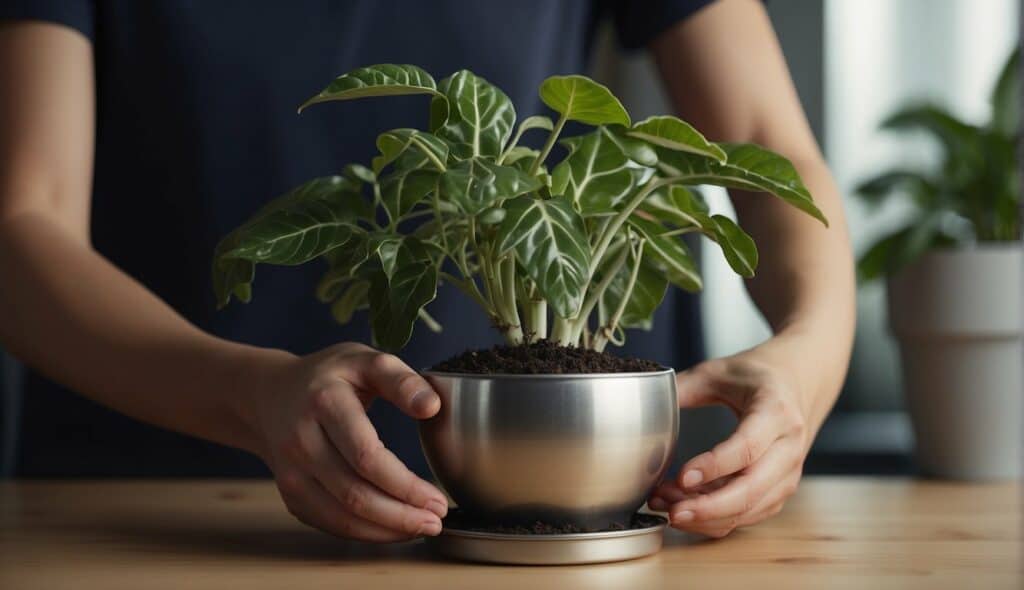
Propagation Methods
Silver Vase Plant can be propagated through offsets or pups that grow at the base of the mother plant.
These offsets can be removed from the mother plant once they have grown to a reasonable size and have developed their own roots.
It is essential to wait until the pups are at least one-third the size of the mother plant before removing them.
Once removed, the offsets can be potted in a well-draining soil mix and kept in a bright, indirect light.
Repotting Steps
Silver Vase Plant does not require frequent repotting and can thrive in the same pot for several years.
However, if the plant has outgrown its pot or the soil has become compacted, it may be time to repot.
To repot a Silver Vase Plant, follow these steps:
- Choose a pot that is one size larger than the current pot and has drainage holes.
- Prepare a well-draining soil mix by combining equal parts of peat moss, perlite, and coarse sand.
- Gently remove the plant from its current pot and loosen the roots.
- Place a layer of the soil mix at the bottom of the new pot and position the plant in the center.
- Fill the remaining space with the soil mix, ensuring that the plant is at the same depth as before.
- Water the plant thoroughly and place it in a bright, indirect light.
It is important to avoid overwatering the plant after repotting, as this can lead to root rot.
Wait at least a week before watering the plant again to allow it to adjust to its new pot.
Troubleshooting Common Issues

Pest Infestations
Silver Vase Plant is generally pest-resistant, but it can occasionally be affected by mealybugs, spider mites, and scale insects.
If you notice any of these pests on your plant, it is important to act quickly to prevent them from spreading.
To get rid of mealybugs and scale insects, you can wipe them off the plant with a cotton swab dipped in alcohol.
For spider mites, you can spray the plant with a mixture of water and dish soap.
Diseases
Silver Vase Plant is susceptible to root rot, which can be caused by overwatering or poor drainage.
To prevent root rot, make sure the soil is well-draining and avoid overwatering the plant.
If you notice any signs of root rot, such as yellowing leaves or a mushy stem, you should remove the affected parts of the plant and repot it in fresh soil.
Leaf Discoloration and Damage
If the leaves of your Silver Vase Plant are turning brown or yellow, it may be a sign of overwatering or underwatering.
Make sure to water the plant only when the top inch of soil is dry.
If the leaves are curling or wilting, it may be a sign of underwatering. In this case, you should water the plant more frequently.
If the leaves are turning brown at the tips, it may be a sign of too much fertilizer.
Reduce the amount of fertilizer you are using and make sure to follow the instructions on the label.
By keeping an eye out for these common issues and taking action when necessary, you can ensure that your Silver Vase Plant remains healthy and beautiful for years to come.
Frequently Asked Questions
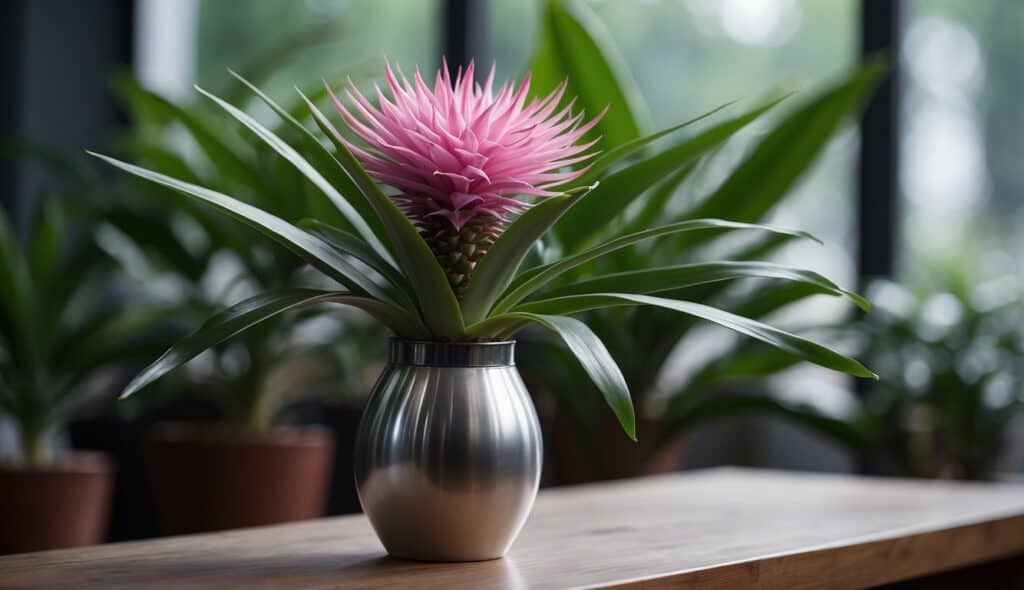
How do you properly water and maintain the moisture for a Silver Vase Bromeliad?
The Silver Vase Plant is a type of bromeliad that requires moderate watering.
It is important to avoid overwatering and ensure that the soil is well-draining.
You can water the plant once a week during the growing season and reduce the frequency during the dormant period.
Additionally, it is recommended to mist the leaves occasionally to maintain the moisture level.
What are the ideal temperature conditions for growing a healthy Aechmea fasciata?
The Silver Vase Plant prefers warm and humid conditions. The ideal temperature range for this plant is between 60-80°F (15-27°C).
It is important to avoid placing the plant in direct sunlight as it can damage the leaves.
Can you explain the blooming season and vase life of an Aechmea fasciata plant?
The Silver Vase Plant typically blooms once a year during the summer season.
The blooming period lasts for several weeks, during which the plant produces a pink or purple inflorescence.
The vase life of the flowers is around 2-3 months.
What are some interesting facts about the Silver Vase Plant?
The Silver Vase Plant is a popular ornamental plant that is native to Brazil. It is also known as Urn Plant or Aechmea Fasciata.
The plant has long, narrow leaves that form a rosette, and it produces a tall inflorescence that resembles a vase.
The leaves of the plant have a silver-gray color, which gives it a unique appearance.
How can you propagate Silver Vase Plant pups for successful growth?
The Silver Vase Plant produces pups or offsets that can be propagated for successful growth.
You can remove the pups from the mother plant once they have developed roots and plant them in a separate container.
It is important to ensure that the soil is well-draining and the plant receives adequate sunlight and water.
What is the expected lifespan of an Aechmea fasciata in a home environment?
The Silver Vase Plant can live for several years in a home environment with proper care.
The lifespan of the plant depends on various factors such as watering, sunlight, and temperature conditions. On average, the plant can live for 5-7 years.






